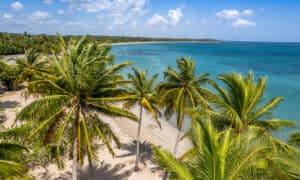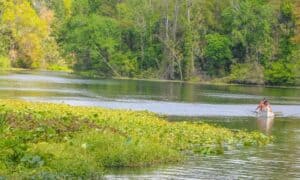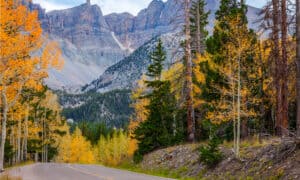It’s impossible to describe the impact of the Grand Canyon. Vast, mysterious, immense, and seemingly forever wild, the canyon has captured the imagination and adventurous spirit of explorers for as long as explorers have sought adventure. After over a century of study, however, the canyon still holds mysteries. Don’t miss the details on ten Grand Canyon facts that continue to inspire awe.
A Fearless Explorer Named the Grand Canyon

Before John Powell, no one had ever ventured through the canyon.
©Amanda Mohler/Shutterstock.com
John Wesley Powell, geologist, and Civil War Army veteran, set off down the Colorado River on May 24, 1869. No one had successfully undertaken the journey before. Powell and his crew traveled all the way down the river, emerging from the Grand Canyon on August 30, 1869. By the time they exited, they had enough food and supplies to last the crew only a few days. Four of the crew had abandoned the exploration during the trek, but Powell was undeterred. He took detailed notes, observations, and samples, returning to do the trip a second time in 1871. His expeditions provided the material needed to fill in the last large blank spaces in the map of the United States.
During the expedition, he referred to the canyon as ‘The Grand Canyon.” Powell’s name for the area was included in future publications, including maps.
The Grand Canyon Was Made By Erosion

The Colorado River etched the stones that made the Grand Canyon over millions of years.
©ipanacea/iStock via Getty Images
The Grand Canyon is an example of the effects of erosion. As the Colorado River flows, it has carved areas away from the rock and ground it traveled over. This resulted in a chasm, or deep fissure, measuring 277 miles long and up to 18 miles wide. The river is about three hundred feet wide and about one hundred feet deep. The friction of the river has eroded the canyon to its current state. Due to the age of the rocks, scientists believe it took between three and six million years for the river to carve out the canyon. Instead of being a singular canyon, it’s possible the Grand Canyon was a series of smaller canyons that merged as the river eroded dividing rocks.
While you might assume it’s a flat canyon, the Grand Canyon has large differences in height. Yavapai Point, the highest point in the canyon, is 2,400 above sea level. The North Rim of the Canyon is the lowest point at 5,400 feet below sea level. While it’s constantly evolving in shape and size, today the Grand Canyon covers 1,900 square miles and is 190 miles long.
The Canyon Creates Its Own Weather
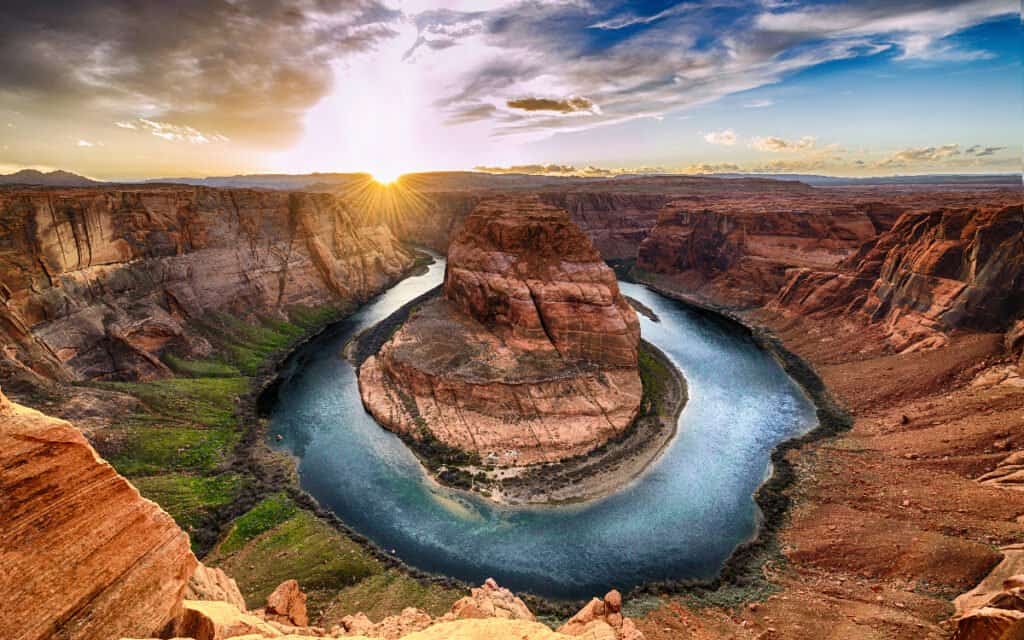
The unique formations of the rocks create an independent ecosystem in the Grand Canyon.
©Wisanu Boonrawd/Shutterstock.com
The Grand Canyon is so vast, with varied ecosystems, that it creates its own weather. Hikers dress in layers of clothing to manage the weather changes they experience in a single day. Based on elevation changes, some areas of the canyon are consistently cool, while others can be very hot, all on the same day! In fact, on the highest rim, up to one hundred inches of snowfall has been recorded in a single winter. This is even more interesting when you consider the canyon is technically part of both the Mojave and the Sonoran desert. The various elevations of the canyon, combined with cave systems, humidity, and natural light patterns, have created ‘pocket’ ecosystems.
While rare, on occasion the entire canyon fills with clouds. Known as ‘temperature inversion’ this phenomenon happens when warm air sits on top of cold air. The canyon experiences partial inversion a few times a year in areas of the canyon. The last complete inversion occurred in December 2014.
The Grand Canyon Has a Unique Ecosystem
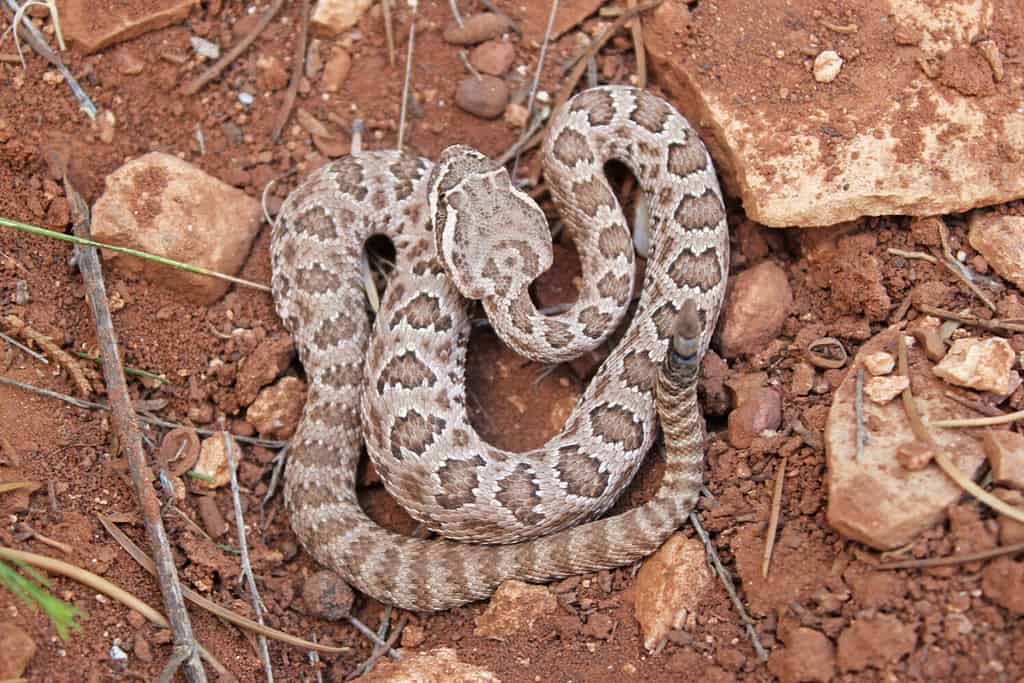
The only known home to the pink
rattlesnake
is the Grand Canyon.
©Creeping Things/Shutterstock.com
The Grand Canyon supports its own ecosystem. There are seventy species of mammals and twenty-five species of reptiles documented to live in the canyon. In addition, five species of amphibians and two hundred and fifty species of birds live within the formation. Some of these animals face an endangered population, making the Grand Canyon a safe haven. In fact, some animals, like the pink rattlesnake, only exist in the canyon.
Most Surprising Grand Canyon Fact: There’s a Town at the Bottom
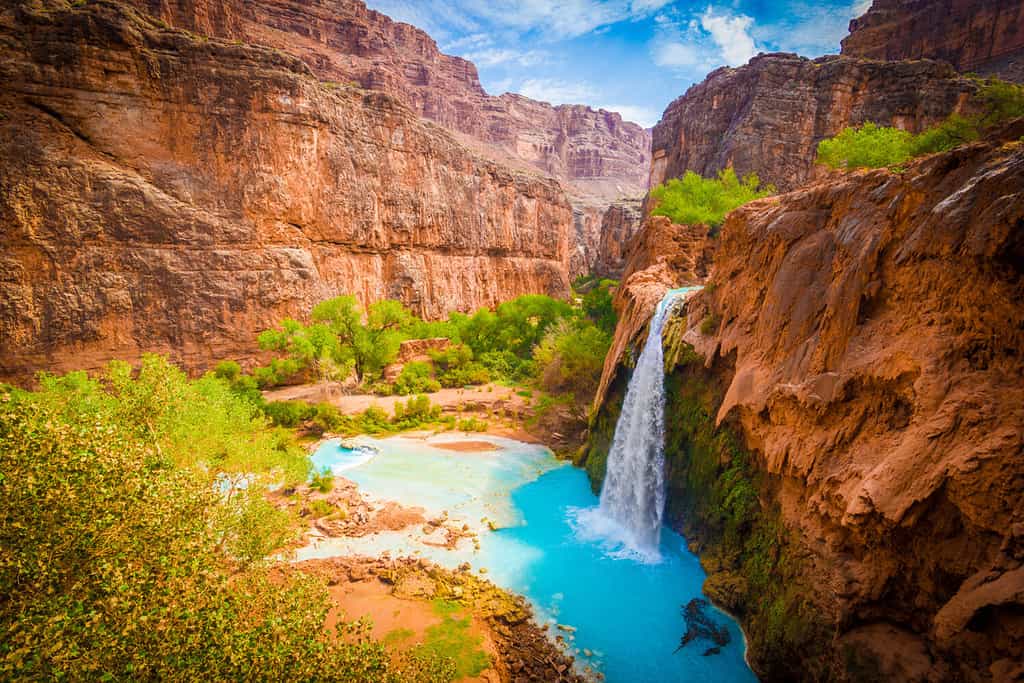
The Havasupai Tribe are traditionally protectors of the Grand Canyon’s waterfall.
©iacomino FRiMAGES/Shutterstock.com
A Grand Canyon fact that surprises many, people live in the canyon. Supai is a small village on a reservation in the Havasu Canyon. The reservation, managed by the Havasupai Tribe, is open to visitors with restrictions. Visitors are able to tour and camp in the vicinity with permits. The Havasupai tribe lived in and around the canyon before it became a national park in 1919. When the park was established, the tribe kept ownership of some of the land. Around six hundred and forty members of the tribe remain in the park. Culturally, the tribe is considered the guardian of the waterfalls in the canyon and continues to honor that role today.
The Grand Canyon is Full of Mysteries
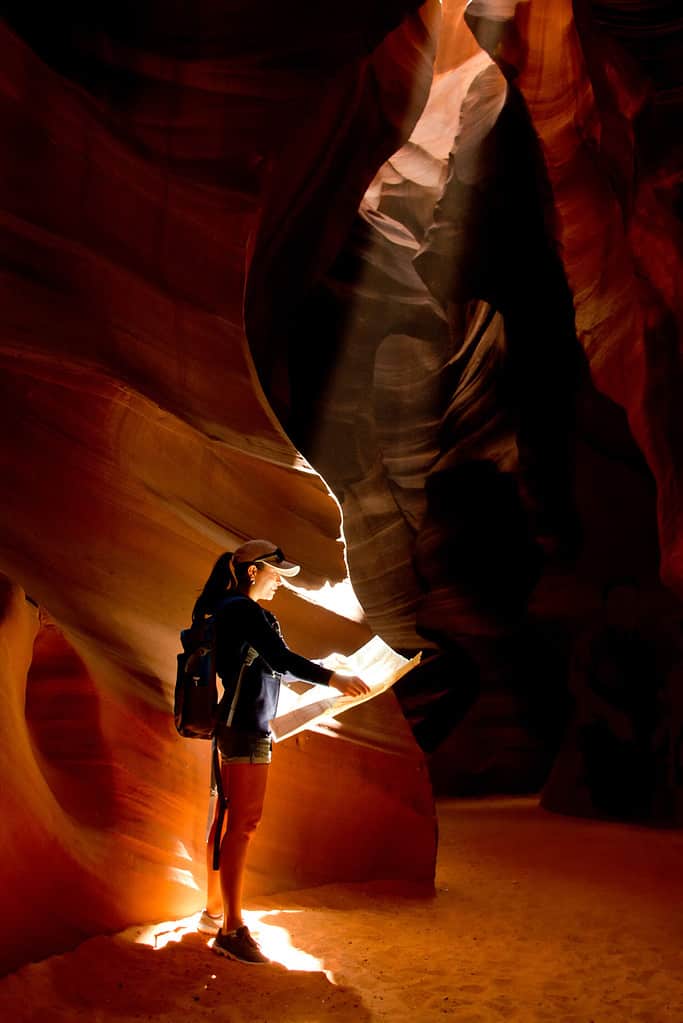
Home to many caves, only one in the Grand Canyon is open to visitors.
©ESB Basic/Shutterstock.com
The most incredible Grand Canyon fact is that we haven’t explored all of it. While over three hundred caves within the canyon have been documented, geologists estimate the Grand Canyon is home to at least one thousand caves. Another mystery lies in the rocks themselves. Scientists discovered an anomaly in the rocks. Even though they’re directly on top of one another, rocks in the canyon display over a billion years of difference in age. Referred to as the great unconformity, this phenomenon is noted in several worldwide geographic regions. If you’re truly curious, a hike to the bottom of the canyon will allow viewing of these two separate rock formations.
The Canyon was Originally Home to Indigenous Tribes

Hopi House. Located outside the rim of the Grand Canyon, the house is an example of traditional Hopi architecture.
©iStock.com/Konoplytska
Artifacts show the Grand Canyon has been prominent to many indigenous tribes. Artifacts exist from Archaic, Paleo-Indian, Basketmaker, Ancestral Puebloan, Cerbat, Pai, Southern Paiute, Zuni, Navajo, and Hopi tribes. Archeologists are still not certain how or when each of these tribes interacted with the canyon, and whether they all lived within the canyon. Findings indicate that as early as the tenth century, mason-style homes existed within the canyon. Also discovered were seeds, pottery shards, ash, and dumps. While it’s a fact that many tribes lived in the Grand Canyon, it’s not clear when.
The Grand Canyon Isn’t the Deepest Canyon in the World

Hells Canyon is the deepest canyon in the United States.
©CSNafzger/Shutterstock.com
The Cotahuasi Canyon in Peru and the Kali Gandaki Gorge in Nepal are both deeper. The Cotahuasi Canyon is recorded as having a depth of up to twice that of the Grand Canyon. The Kali Gandaki Gorge has been measured to be three times as deep as the Grand Canyon from some of its rim summits. While the Grand Canyon and the Cotahuasi Canyon were formed by river erosion, the Kali Gandaki Gorge is the result of tectonic activity. Shifting tectonic plates created depressions in the earth while forcing the surrounding mountains higher.
A surprising Grand Canyon fact is that it’s not the deepest canyon in the United States. Hell’s Canyon, which spans Washington, Idaho, and Oregon is.
There Are No Dinosaur Fossils
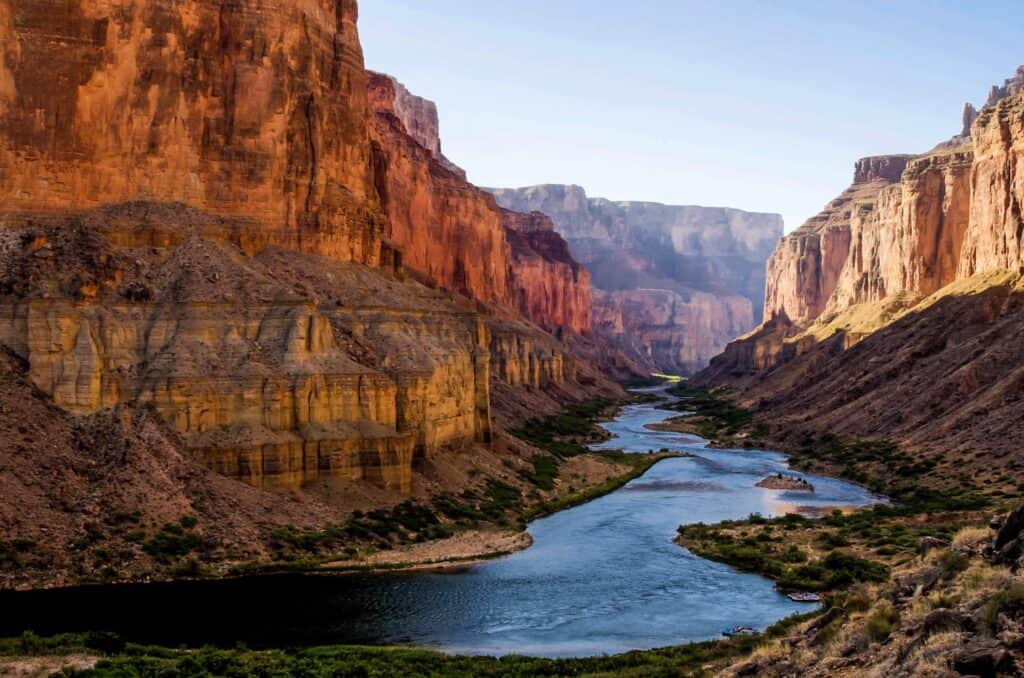
While you might see plant fossils, the rocks that make the Grand Canyon are too old to bear dinosaur fossils.
©Beth Ruggiero-York/Shutterstock.com
What could possibly be cooler than dinosaur fossils? Touching rock that’s older than dinosaurs. The rocks that create the walls of the canyon pre-date the existence of dinosaurs by up to a billion years in some areas. Dinosaur fossils could not form simply because dinosaurs never lived in the area. Further, dinosaurs were likely extinct before the Colorado River began creating the canyon. This makes the possibility of dinosaurs being within the canyon to leave fossils impossible.
The canyon has been a resource for fossils, however. Marine fossils are abundant in the sedimentary rock. Crinoids, dragonfly wing impressions, sponges, and other aquatic fossils provide insight into the past.
How the Grand Canyon Became a National Park

While we’ve visited and explored the Grand Canyon since the 1800s, it only became a national park in 1919.
©Geoff Lay/Shutterstock.com
The Grand Canyon officially became a national park in 1919. The Grand Canyon owes its status to the work of several United States Presidents. President Benjamin Harrison named it the Grand Canyon Forest Reserve in 1893. President Theodore Roosevelt named the canyon a national monument in 1908, following a visit in which he explored the canyon. Woodrow Wilson officially moved to have the canyon placed under the conservation of the National Park Service in 1919 by declaring it a national park.
Thank you for reading! Have some feedback for us? Contact the AZ Animals editorial team.





